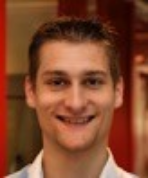 In his thesis work Erwin van der Poel developed novel numerical approaches, to study complex phenomena in thermal convection. Increasing computational power allows for studying turbulence, by advanced simulation and calculating techniques. ‘We worked on optimizing new numerical codes, in which up to 100.000 cores are used in parallel,’ he says. ‘This leads to huge computational time savings for the next five till ten years, which will facilitate future scientific research.’
In his thesis work Erwin van der Poel developed novel numerical approaches, to study complex phenomena in thermal convection. Increasing computational power allows for studying turbulence, by advanced simulation and calculating techniques. ‘We worked on optimizing new numerical codes, in which up to 100.000 cores are used in parallel,’ he says. ‘This leads to huge computational time savings for the next five till ten years, which will facilitate future scientific research.’
In his work the so-called Rayleigh-Bénard (RB) convection was studied, in which a fluid is heated from below and cooled from above. This classical physics problem is studied for over a hundred years now, giving insight in various application fields such as: astrophysics, geophysics, industrial processes, daily-life phenomena and microfluidics.

‘Increasing computational power gives room for even more daring numerical simulations and calculations on RB convection,’ Erwin says. ‘Now turbulence phenomena are ready to be studied, in which temperature differences are exceptionally large.’
World class

Erwin worked on paralleling schemes as a result of which valuable extra computer time is required, to gather information from all the involved processes. ‘Optimizing these schemes allow computers to perform calculations rather than losing time on communicating between the parallel processes,’ Erwin explains. ‘The numerical paralleling schemes we realized are world class. They were published open source, in collaboration with SURFsara, so scientists and other stakeholders may profit from this work freely.’
By performing simulations, Erwin contributed to gaining insight in typical new phenomena, coming within reach by these novel brute force computational techniques. In strongly driven Rayleigh-Bénard convection, the boundary layer transits from laminar to turbulent.
‘Classical assumptions are no longer valid here,’ Erwin says. ‘This kind of transitions are of actual importance in modern science. First experiments are being designed and built to confirm these phenomena. The challenge is to extrapolate the new findings towards astrophysics, for example, which may lead to new insights.’
Collaborations
Erwin collaborated with colleagues of his own Physics of Fluids group, studying Taylor-Couette flows. Erwin: ‘In my project I found that thermal plumes generate turbulence in the boundary layer. My colleagues observed similar phenomena, which is a stimulating experience.’
Studying these phenomena in real-life experimental setups is relatively difficult, as it is hard to measure the parameters involved in the closed environments in which they occur. The Max Planck institute in Göttingen is able to build large-scale experiments. Erwin collaborated with them, as he did with scientist from universities in Ann Arbor and Rome
Sports analyses

After his PhD defence Erwin prefers to go and work in industry rather than in academics. ‘It is a demanding route, requiring post-doc positions abroad,’ he says. ‘Opportunities to contribute in a pleasant manner are abundantly present within industry as well, I believe.
‘Right now I am working part-time in a start-up company which I co-founded and is working on new systematic sport analyses. In my future work some affiliation with fluid dynamics would be nice, but not necessarily needed. For example, I enjoyed contributing to experimental work of a master student in our group, thinking of new algorithms to simulate the orientation of a ball flowing in a stream. It is the technical content that thrives me towards good results. These topics can be found anywhere.’
